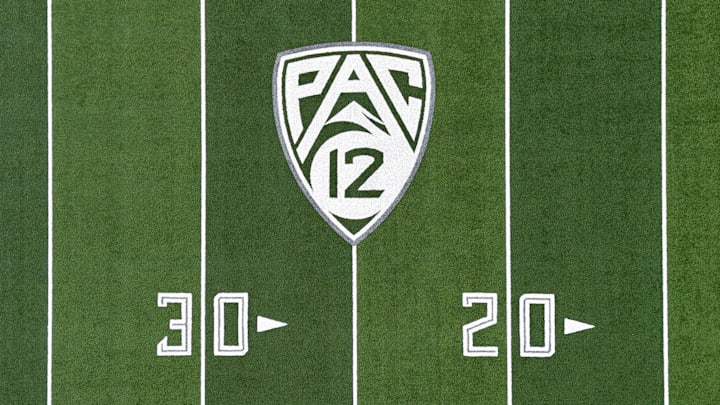The Pac-12’s latest moves are positioning the conference for a transformation that could fundamentally reshape its identity.
Good morning! It's a beautiful new day 😎#BackThePac pic.twitter.com/jfIU1Gk22u
— Pac-12 Conference (@pac12) September 12, 2024
With traditional powerhouses like USC, UCLA, and Oregon gone, the Pac-12's survival depends on new strategies, including the bold pursuit of Central Time Zone schools like Tulane and Memphis.
This shift wouldn't be just about keeping the Pac-12 afloat—it's about strategically expanding its influence across the country. As these schools enter the conversation, it's time to explore the potential implications and benefits for the Pac-12 and how the addition of these new markets could redefine the conference.
Central Time Zone Opens New Doors
The addition of Tulane and Memphis offers a key advantage: expanded geographic and market reach. Traditionally rooted in West Coast football, the Pac-12's footprint has been confined to the Pacific and Mountain Time Zones. By tapping into the Central Time Zone, the Pac-12 stands to increase viewership, media rights revenue, and brand exposure. The Central Time Zone is a critical region in college football, home to some of the most passionate and engaged fan bases.
Tulane, based in New Orleans, brings access to a highly regarded football program in a major sports market. New Orleans is not just a regional hub for football; it’s a cultural epicenter that can help draw broader attention to the Pac-12. Tulane’s recent success under head coach Willie Fritz has made them a national contender, positioning them as a valuable addition that could help elevate the Pac-12’s competitiveness on the field. Their proximity to the Southeastern Conference (SEC) market also opens the door for the Pac-12 to dip into a region traditionally dominated by SEC powerhouses, potentially creating new rivalries and storylines.
Memphis, a powerhouse from the American Athletic Conference, has also established itself as a top-tier Group of Five school in both football and basketball. The city of Memphis itself is a sports-hungry market, and FedEx’s $25 million investment into Memphis’ NIL efforts shows that the financial backing is there to help the school thrive in a Power Five conference. Memphis brings an entirely new audience to the Pac-12, bridging the gap between the West Coast and the Midwest.
By adding Tulane and Memphis, the Pac-12 will have access to major TV markets like New Orleans and Memphis, which in turn boosts the conference’s appeal to media networks, advertisers, and fans alike. The time zone expansion allows for more flexible scheduling, offering games that can cater to both East Coast and West Coast audiences, potentially increasing viewership during prime-time hours.
Leveling the Playing Field: Increased Competition
Tulane and Memphis won’t just bring new fans—they’ll also bring fresh competition. Both programs have enjoyed a level of success in recent years that could rival some of the more established Pac-12 schools.
The Green Wave and Tigers have both developed reputations for being tough, gritty programs capable of pulling off upsets and competing at a high level. Tulane’s resurgence in college football has been nothing short of impressive, and their ability to develop talent could challenge other Pac-12 schools to step up their game.
Memphis’ basketball program, one of the most formidable outside of the Power Five conferences, will also add a level of competition that could help revitalize Pac-12 basketball, which has seen its own share of struggles in recent years.
This increased competition could be a major selling point as the Pac-12 works to rebuild its brand. The conference's ability to integrate schools with established success but a hunger to prove themselves on a national stage could add to the appeal for fans, sponsors, and media partners.
Financial Benefits: The Dollars and Sense of Expansion
From a financial perspective, the addition of Tulane and Memphis presents several key opportunities. The Pac-12 has long been seen as lagging behind other Power conferences in terms of revenue, media rights deals, and financial stability. But with the upcoming realignment, there’s room to change that narrative.
Adding schools from the Central Time Zone gives the Pac-12 a valuable asset—time. Having games played across multiple time zones allows the conference to offer more games in prime-time slots, which, in turn, could boost viewership and increase the value of future media deals. Networks are always looking for content that fills these prime windows, and the addition of Central Time Zone teams allows the Pac-12 to meet this demand.
Moreover, as Tulane and Memphis bring their established fan bases and successful programs into the fold, the potential for increased ticket sales, merchandise, and advertising revenue grows. The media market in the Central Time Zone is less saturated than in the West, meaning that there is untapped potential for the Pac-12 to exploit.
Revamping the Conference’s Identity
Perhaps the most important effect of adding Tulane and Memphis is the chance to reshape the Pac-12’s identity. After losing major West Coast powerhouses, the conference needs to redefine what it stands for. Adding schools from the Central Time Zone sends a message: the Pac-12 is no longer just a West Coast conference; it’s a national one.
